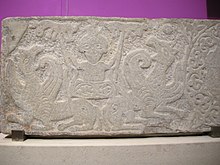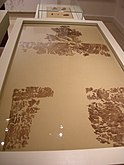
Athens is a major coastal urban area in the Mediterranean, and it is both the capital and the largest city of Greece. Athens is also the capital of the Attica region and is the southernmost capital on the European mainland. With its urban area's population numbering over three million, it is also the eighth largest urban area in the European Union. The Municipality of Athens, which constitutes a small administrative unit of the entire urban area, had a population of 643,452 (2021) within its official limits, and a land area of 38.96 km2 (15.04 sq mi).
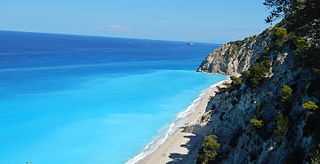
Tourism in Greece has been a key element of the economic activity in the country, and is one of the country's most important sectors. Greece has been a major tourist destination and attraction in Europe since the 1970s for its rich culture and history, which is reflected in large part by its 18 UNESCO World Heritage Sites, among the most in Europe and the world as well as for its long coastline, many islands, and beaches.

Kalamata is the second most populous city of the Peloponnese peninsula, after Patras, in southern Greece and the largest city of the homonymous administrative region. As the capital and chief port of the Messenia regional unit, it lies along the Nedon River at the head of the Messenian Gulf.
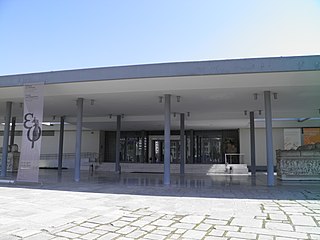
The Archaeological Museum of Thessaloniki is a museum in Thessaloniki, Central Macedonia, Greece. It holds and interprets artifacts from the Prehistoric, Archaic, Classical, Hellenistic and Roman periods, mostly from the city of Thessaloniki but also from the region of Macedonia in general.
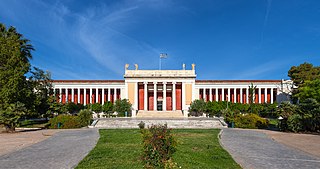
The National Archaeological Museum in Athens houses some of the most important artifacts from a variety of archaeological locations around Greece from prehistory to late antiquity. It is considered one of the greatest museums in the world and contains the richest collection of Greek Antiquity artifacts worldwide. It is situated in the Exarcheia area in central Athens between Epirus Street, Bouboulinas Street and Tositsas Street while its entrance is on the Patission Street adjacent to the historical building of the Athens Polytechnic university.

The Archaeological Museum of Olympia is one of the principal museums of Greece, located in Olympia. It is overseen by the Ministry of Culture and Sports, and, as of 2009, is directed by Georgia Xatzi. When the original building was completed and opened in 1888, it was the first museum in Greece outside of Athens.

The Numismatic Museumof Athens is one of the most important museums in Greece and it houses a collection of over 500,000 coins, medals, gems, weights, stamps and related artefacts from 1400BC to modern times. The collection constitutes one of the richest in the world, paralleled by those of the British Museum in London, the Bibliothèque Nationale in Paris, the State Hermitage Museum in St. Petersburg, the Bode Museum in Berlin, and the American Numismatic Society in New York. The museum itself is housed in the mansion of the archaeologist Heinrich Schliemann, formally known as Iliou Melathron.
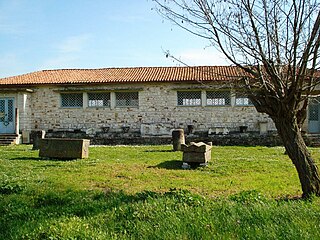
The Archaeological Museum of Nicopolis is a museum in Nicopolis, in the Preveza regional unit in northwestern Greece.

People's Republic of China has an embassy in Athens. The Hellenic Republic has an embassy in Beijing and three general consulates in Guangzhou, Hong-Kong and since 2005 in Shanghai. The Port of Piraeus is important from a geostrategic view for China, as it helps China's transactions with the whole of Europe. Thousands of Chinese people are living in Greece in the Overseas Chinese context and approximately 1000 Greek citizens are living in China. Modern diplomatic relations between the two countries were established in 1972. Today, Greece and China enjoy a very good relationship based on a solid foundation, which continues to be growing steadily.

The Archaeological Museum of Astypalaia is a museum in Astypalaia, Greece.
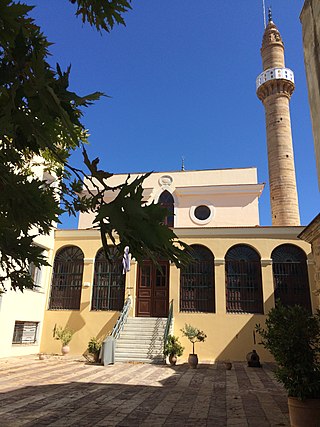
The Chios Byzantine Museum is a museum in Chios, Greece, housed in an Ottoman-era mosque that was known as the Mecidiye Mosque.

The Archaeological Museum of Delos is a museum on the island of Delos, near Mykonos in the South Aegean, Greece. It is noted for its extensive collection of statues unearthed in the surrounding area of the ancient site, which has been declared a UNESCO World Heritage Site. Although the museum has a considerable collection, it does not contain all of the items found in Delos: a large quantity are on display in Athens at the National Archaeological Museum.

The Florina Museum of Modern Art is an art museum in Florina in Greece. It was founded by the Florina Art Centre in 1977. It is housed in a neoclassical building by the Sakouleva river. The museum's collection is composed of 480 works by 254 artists, which includes paintings, sculptures and engravings. More recently, its collection was enriched by a work of El Greco donated by the national Gallery, as well as by 44 engravings from Florence. These are in display since August 1999. Apart from its permanent exhibition, the museum also organizes art symposia and exhibitions of visual and applied art.
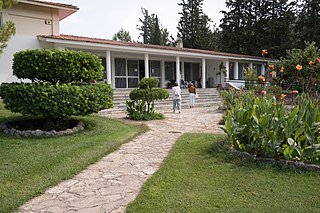
The Archaeological Museum of Nemea is a museum in Nemea, Corinthia, Greece. It was constructed by the University of California and given to the Greek State in 1984. The museum is located at the entrance to the Archaeological site of Nemea. Exhibits finds from this site and the surrounding areas, from Cooper Age (Chalcolithic) to early Byzantine era.

Brontochion Monastery is a monastery in Mystras, Greece.

The Peribleptos Monastery is a late Byzantine-era monastery in Mystras, Greece. It was probably built in the mid-14th century by the first Despot of the Morea, Manuel Kantakouzenos, and named after one of the most celebrated monasteries of Byzantine Constantinople. The frescos in the main church, dating between 1348 and 1380, are a very rare surviving late Byzantine cycle, crucial for the understanding of Byzantine art. It is named after St. Mary of Peribleptos, of Byzantine, Constantinople (Istanbul). The Monastery is built into the side of a cliff with a cave supporting the structure. This architectural style is known as the Mystras style and is prevalent in several churches and monasteries in the area, this style is typified by a resemblance to a castle. It is constructed of squared stones with inlaid tiles. The complexity and unique variations of the shape of the structure of the exterior create an interior surface inside the monastery that lends itself to the ethereal quality of the frescoes covering the walls. These have been described as "delicate and subdued" in Byzantine Architecture and Decoration

The Archaeological Museum of Tegea is a museum in Tegea, Arcadia, Greece.

The Church of Hagia Sophia or Holy Wisdom is a Byzantine church in the fortified medieval town of Mystras, Peloponnese, Greece. It forms part of the wider archaeological site of Mystras, which is designated as a World Heritage Site by UNESCO. Built within the palace complex, it functioned as the royal palace church until Ottoman conquest of Mystras and its conversion into an Islamic mosque. Hagia Sophia of Mystras was made back into a Christian church when Greece achieved independence during the early eighteenth century.

The Mosque of Monemvasia is a historical Ottoman religious building located in the lower medieval town of Monemvasia, Peloponnese, Greece. Following Greece's independence in 1830, it was briefly used as a prison. The restored old mosque has housed the city's archaeological collection since 1999.


